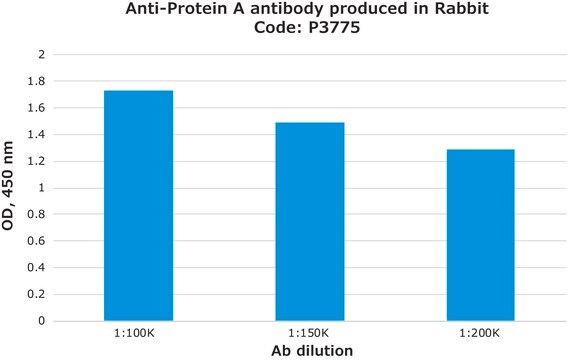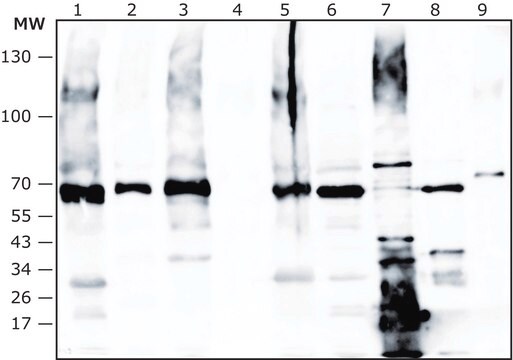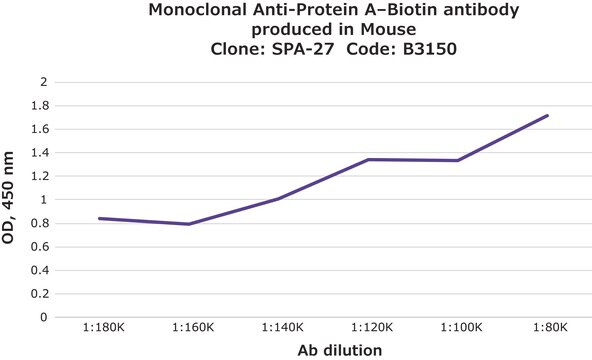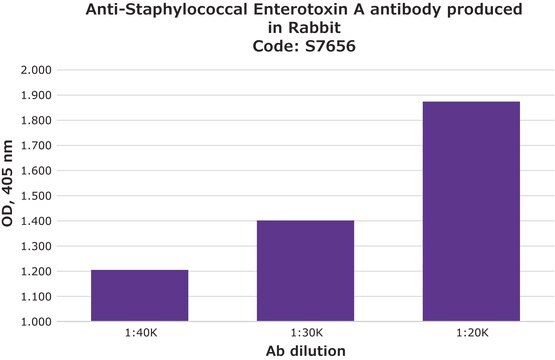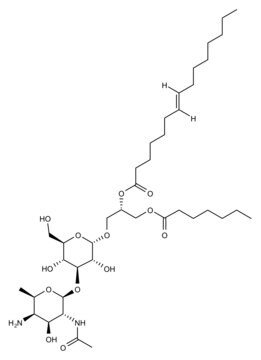Key Documents
SAB4200745
Anti-Protein A antibody, Mouse Monoclonal
clone SPA-27, purified from hybridoma cell culture
Synonim(y):
Anti-IgG binding protein A, Anti-SpA, Anti-Staphylococcal protein A, Anti-Staphylococcus ayreus protein A
About This Item
Polecane produkty
pochodzenie biologiczne
mouse
Poziom jakości
forma przeciwciała
purified from hybridoma cell culture
rodzaj przeciwciała
primary antibodies
klon
SPA-27, monoclonal
Postać
buffered aqueous solution
masa cząsteczkowa
~42 kDa
reaktywność gatunkowa
Staphylococcus aureus
stężenie
~1.0 mg/mL
metody
dot blot: suitable
flow cytometry: suitable
immunoblotting: suitable
immunofluorescence: suitable
immunoprecipitation (IP): 2.5-5 μg/test using purified protein A from Staphylococcus aureus
indirect ELISA: 0.25-0.5 μg/mL using 10 μg/mL of protein A from Staphylococcus aureus for coating. To reduce nonspecific binding we recommend on detection using a secondary anti-mouse, F(ab’)2 fragment antibody
izotyp
IgG1
Warunki transportu
dry ice
temp. przechowywania
−20°C
docelowa modyfikacja potranslacyjna
unmodified
Powiązane kategorie
Opis ogólny
Specyficzność
Immunogen
Zastosowanie
Działania biochem./fizjol.
Postać fizyczna
Przechowywanie i stabilność
Oświadczenie o zrzeczeniu się odpowiedzialności
Nie możesz znaleźć właściwego produktu?
Wypróbuj nasz Narzędzie selektora produktów.
Kod klasy składowania
12 - Non Combustible Liquids
Klasa zagrożenia wodnego (WGK)
WGK 1
Temperatura zapłonu (°F)
Not applicable
Temperatura zapłonu (°C)
Not applicable
Certyfikaty analizy (CoA)
Poszukaj Certyfikaty analizy (CoA), wpisując numer partii/serii produktów. Numery serii i partii można znaleźć na etykiecie produktu po słowach „seria” lub „partia”.
Masz już ten produkt?
Dokumenty związane z niedawno zakupionymi produktami zostały zamieszczone w Bibliotece dokumentów.
Klienci oglądali również te produkty
Nasz zespół naukowców ma doświadczenie we wszystkich obszarach badań, w tym w naukach przyrodniczych, materiałoznawstwie, syntezie chemicznej, chromatografii, analityce i wielu innych dziedzinach.
Skontaktuj się z zespołem ds. pomocy technicznej
